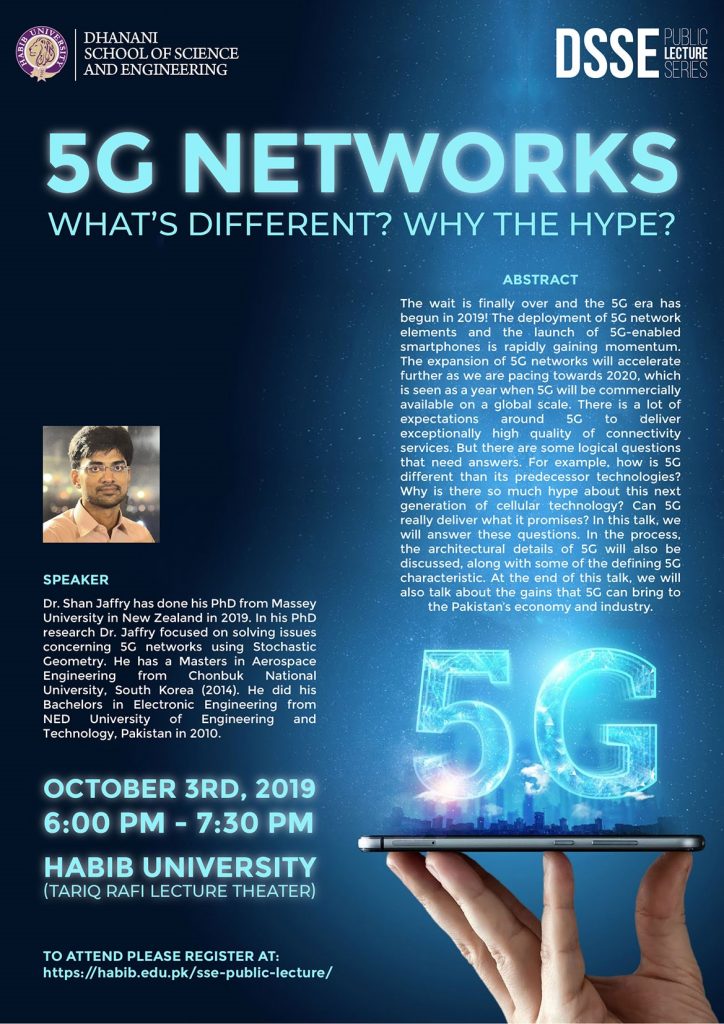By: Fatima Durrani – Social Development and Policy Major 2020
(Student, School of Arts, Humanities and Social Sciences, Habib University)
Dr. Glen Van Brummelen is an internationally acclaimed Canadian historian of mathematics specializing in historical applications of mathematics to astronomy. On the 7 of August, Dr. Brummelen brought to Habib University his rich and wide berth of knowledge of Mathematics and Astronomy and presented it to an audience of over fifty students, mathematics enthusiasts and professors in a DSSE Public Lecture. This lecture, titled ‘FROM THE HEAVENS TO THE EARTH: THE MERCURIAL TALE OF SPHERICAL TRIGONOMETRY’ was an in-depth summary of his renowned book- first one, to be accurate- with the same title (The Mathematics of the Heavens and the Earth: The Early History of Trigonometry). His book has enjoyed extreme success in the academic circles and is a further testament to his mastery in this arena. Continue reading →
Read MoreThe lecture hall clamored with engineering students and faculty members. Tech enthusiasts and telecommunication experts, some of which joined as external guests, also formed part of the audience. Dr. Shan Jaffry stood centre stage preparing to expose the expectant listeners to the wonders of technology from the future. The subject of the lecture directly corresponded to the area Dr. Jaffry’s doctoral research focused on, which he pursued at Massey University, New Zealand. His work concerned the advanced technological systems and improved architectural aspects that can lead to the realization of 5G networks. Interestingly, Dr. Jaffry’s field of knowledge expanded to include aerospace engineering, which he mastered at Chonbuk National University of South Korea.
The buzz of the impending leap from 4G to 5G has taken over telecommunication centers but it has also reached the public, eliciting curious excitement. Dr. Jaffry began by addressing the hype bubble around 5G networks. Cellular technology was first introduced in the 1970s and since then continued to improve in performance and accessibility. The advancement from 3G to 4G was greater than when 3G superseded 2G, so how different was 5G going to be from its predecessor? The development in cellular technology so far has majorly been focused on improved efficiency, through faster and neater processing systems. However, as Dr. Jaffry emphasized, the change in 5G technology is revolutionary at the architectural level of its functioning system. The innovation that has been leading towards its conception includes an attempt to redesign the way cellular networks work by introducing multiple new systems of technology.
There are high expectations from the 5G network. In an era where streaming high-quality videos comprises the largest chunk of bandwidth usage, there is great demand from cellular technology to support downstream heavier data. According to Dr. Jaffry, the enhanced 5G technology being devised could lead to making possible a world of holographic communication, not very far in the future. Some of the new technologies he presented, involved swapping centimeter radio waves with millimeter waves, which are faster and more efficient in transferring data. He also highlighted some challenges of this transition and then countered it by explaining further innovations like the intervention of using small cell networks, placed at shorter distances rather than larger ones to ensure smooth transfer of millimeter waves. He further, touched upon even more advanced technologies in the works, that aim at reducing the role of base stations in Radio Access Networks (RAN) altogether, thereby allowing direct, device-to-device data transmission.
The limitations that come with any intervention do not escape the promise of the fifth-generation network. Dr. Jaffry discussed its shortcomings and concluded by making an overall feasibility case for its deployment. It came as no surprise that the existing technological infrastructure of cities in Pakistan was not as conducive to utilizing the maximum potential of 5G networks as the ones in more developed countries. Questions were mostly posed by students, ranging from technical queries to intrigue regarding the socio-cultural impact of 5G. One voice raised the concern of installing high-tech systems in poorer nations, while another brought to attention its health implications. The lecture came to a close with an appreciation for the new awareness gained through the help of Dr. Shan Jaffry as the promise of vast possibilities hung in the air.









